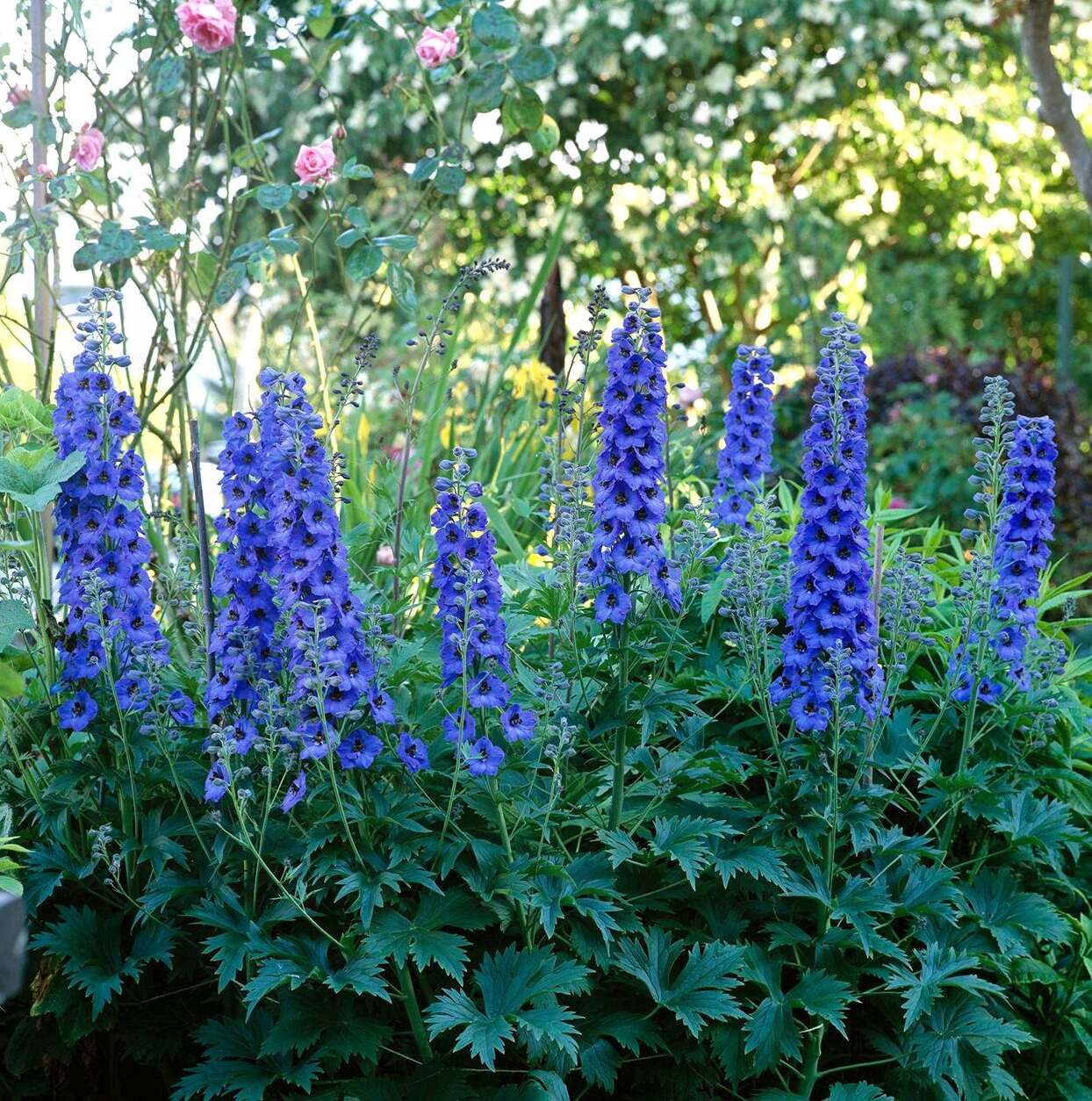
Delphiniums are stunning flowers that can transform any garden into a vibrant, colorful paradise. Known for their tall spikes and brilliant hues, these blooms are a favorite among gardeners and flower enthusiasts alike. But what makes delphiniums so special? Delphiniums belong to the buttercup family and come in various shades of blue, purple, pink, and white. They thrive in cooler climates and require well-drained soil to flourish. These flowers not only add beauty but also attract pollinators like bees and butterflies, making them an excellent choice for eco-friendly gardening. Ready to learn more about these captivating plants? Here are 33 fascinating facts about delphiniums that will deepen your appreciation for these floral wonders.
What is Delphinium?
Delphinium, also known as larkspur, is a stunning flower that belongs to the buttercup family. These flowers are known for their tall spikes and vibrant colors, making them a favorite in gardens and floral arrangements.
- Delphiniums are native to the Northern Hemisphere, particularly in mountainous regions.
- The name "delphinium" comes from the Greek word "delphis," meaning dolphin, due to the flower's shape resembling a dolphin's nose.
- There are over 300 species of delphinium, each with unique characteristics.
- Delphiniums can grow up to 6 feet tall, making them one of the tallest garden flowers.
- These flowers come in various colors, including blue, purple, pink, and white.
Growing Delphinium
Growing delphiniums can be a rewarding experience for any gardener. However, they do require specific conditions to thrive.
- Delphiniums prefer cool climates and do not fare well in extreme heat.
- They need well-drained soil rich in organic matter to grow properly.
- These flowers require full sun but can tolerate partial shade.
- Delphiniums need to be staked to prevent their tall spikes from falling over.
- Regular watering is essential, but overwatering can lead to root rot.
Delphinium Care
Caring for delphiniums involves regular maintenance to ensure they remain healthy and vibrant.
- Deadheading, or removing spent flowers, encourages more blooms.
- Delphiniums are prone to pests like aphids and slugs, so regular monitoring is necessary.
- Applying a balanced fertilizer during the growing season can promote healthy growth.
- Mulching around the base helps retain moisture and suppress weeds.
- In colder climates, delphiniums may need protection from frost.
Delphinium Uses
Delphiniums are not just beautiful; they have various uses that make them even more special.
- These flowers are popular in floral arrangements due to their striking appearance.
- Delphiniums are often used in wedding bouquets for their elegant look.
- They can be dried and used in potpourri or dried flower arrangements.
- Delphiniums attract pollinators like bees and butterflies to the garden.
- Some species of delphinium have been used in traditional medicine for their purported healing properties.
Interesting Facts About Delphinium
Delphiniums have a rich history and some fascinating facts that make them even more intriguing.
- In the Victorian language of flowers, delphiniums symbolize an open heart and ardent attachment.
- The ancient Greeks believed that delphiniums grew from the blood of Ajax, a hero from the Trojan War.
- Delphiniums were used as a dye by Native Americans.
- These flowers are toxic if ingested, so they should be kept away from pets and children.
- Delphiniums have been featured in various works of art and literature, symbolizing beauty and grace.
Delphinium Varieties
There are many varieties of delphinium, each with its unique charm.
- The 'Pacific Giant' series is known for its large, vibrant blooms.
- 'Belladonna' delphiniums have a more relaxed, open flower spike.
- 'Magic Fountains' are a dwarf variety, perfect for smaller gardens.
- 'Aurora' delphiniums are known for their sturdy stems and resistance to wind.
- 'Blue Butterfly' is a compact variety with striking blue flowers.
Delphinium in Culture
Delphiniums have made their mark in various cultures around the world.
- In Chinese culture, delphiniums are associated with protection and good fortune.
- In the United Kingdom, delphiniums are often seen in cottage gardens, symbolizing a quintessential English garden.
- Delphiniums are the birth flower for July, representing positivity and an open heart.
Final Thoughts on Delphinium
Delphiniums, with their vibrant colors and towering spikes, bring a touch of magic to any garden. These perennial beauties thrive in cooler climates and need well-drained soil to flourish. While they require some care, like staking and protection from pests, the effort pays off with stunning blooms that attract pollinators like bees and butterflies.
Remember, delphiniums can be toxic if ingested, so keep them away from pets and children. Whether you're a seasoned gardener or a newbie, adding delphiniums to your garden can elevate its charm. Their striking appearance and variety of colors make them a favorite among flower enthusiasts.
So, next time you're planning your garden, consider these elegant flowers. They might just become the highlight of your outdoor space. Happy gardening!
Was this page helpful?
Our commitment to delivering trustworthy and engaging content is at the heart of what we do. Each fact on our site is contributed by real users like you, bringing a wealth of diverse insights and information. To ensure the highest standards of accuracy and reliability, our dedicated editors meticulously review each submission. This process guarantees that the facts we share are not only fascinating but also credible. Trust in our commitment to quality and authenticity as you explore and learn with us.


